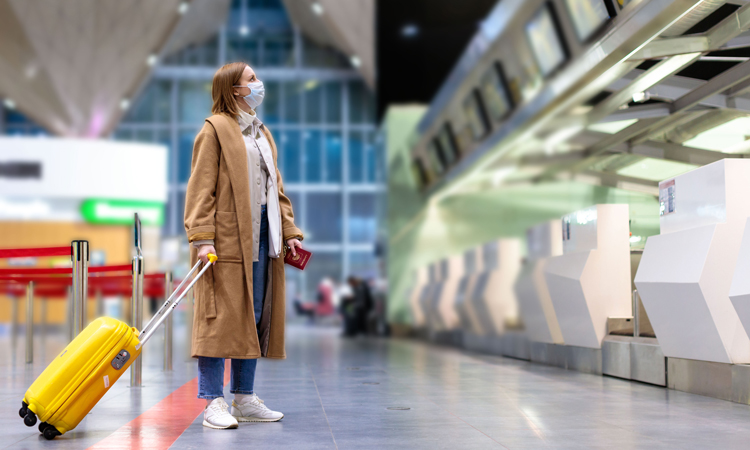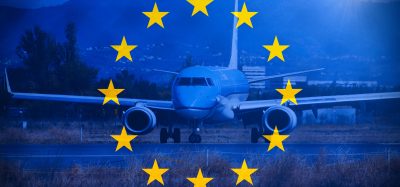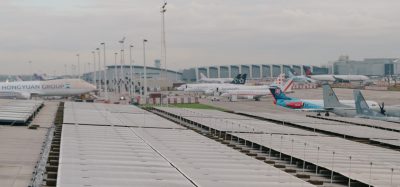COVID-19 safety guidelines for air travel published by EASA and ECDC
- Like
- Digg
- Del
- Tumblr
- VKontakte
- Buffer
- Love This
- Odnoklassniki
- Meneame
- Blogger
- Amazon
- Yahoo Mail
- Gmail
- AOL
- Newsvine
- HackerNews
- Evernote
- MySpace
- Mail.ru
- Viadeo
- Line
- Comments
- Yummly
- SMS
- Viber
- Telegram
- Subscribe
- Skype
- Facebook Messenger
- Kakao
- LiveJournal
- Yammer
- Edgar
- Fintel
- Mix
- Instapaper
- Copy Link
Posted: 21 May 2020 | International Airport Review | No comments yet
The new guidelines for European aviation outline measures that will ensure the safest way to travel amidst the COVID-19 pandemic.


The European Union Aviation Safety Agency (EASA) and European Centre for Disease Prevention and Control (ECDC) have issued a joint document defining measures to ensure the health and safety of air travellers and aviation personnel once airlines resume regular flight schedules following the severe disruption caused by COVID-19.
EASA and ECDC were charged by the European Commission (EC) with drawing up the guidelines, as part of a wider package of measures to prompt the safe restoration of transport services and connectivity following the outbreak of COVID-19.
The guidelines place paramount importance on health safety at every stage of the end-to-end passenger journey. Recognising that airports, airlines and aircraft are different, it takes a pragmatic approach in implementation – highlighting and giving guidance on the ways in which individual locations and situations can best be re-engineered to meet the new health safety standards.
Some overarching principles apply throughout: Observe social distancing wherever possible, wear a medical face mask to protect other passengers and practice scrupulous and frequent hand hygiene. Air passengers and the general population have to be assured that filtered air on airplanes is safer and cleaner than many of us breathe on the ground.
Adina Vălean, the European Commissioner for Transport, said: “The safety of passengers and crews has always been paramount in aviation. Passengers have to have confidence that taking to the skies again in a confined space with other people poses the minimum possible risk to their health. We relied on our specialists from EASA and ECDC to define a set of concrete measures for the safe resumption of air travel within the EU. The protocol released will reassure passengers that it is safe for them to fly and so help the industry recover from the effects of this pandemic.”
The guidance examines each phase of the passenger journey and specifies the actions that need to be taken or measures put in place in six travel segments: Before arrival at the airport, in the departure terminal, when boarding, in flight, in transit and on arrival at the final destination. A separate section focuses on the safety of flight crew members.
The guidelines are based on both agencies’ scientific expertise and reflects the best available scientific knowledge currently available. ECDC is continuously monitoring the situation of COVID-19 and will update the guidelines as new epidemiological information, testing and treatment modalities become available.
ACI Europe
Welcoming the new guidance, the Director General of Airports Council International (ACI) Europe, Olivier Jankovec, highlighted the importance of ensuring the safest and healthiest passenger experience possible as a number of states begin to consider lifting restrictions on travel.
Jankovec said: “Safety and security have always been uncompromising priorities for aviation and both are firmly ingrained into every airport’s operations and corporate culture. Building on this track record, the Aviation Health Safety Protocol designed jointly by EASA and ECDC is fully aligned with our industry’s focus on passenger and staff wellbeing. Crucially, it has the four vital ingredients needed to contain and limit COVID-19 transmission risks during air travel. It is risk-based, effective, proportionate and practical. With this protocol, passengers can return to air travel with confidence.”
He continued: “The ball is now back at national level. We urge European states to fully adhere to what EASA and the ECDC are recommending. This is the European standard they need to follow, and they should not depart from it – so we can ensure truly uniform and coherent measures across our continent. Doing otherwise would only risk working against passenger confidence and further delay the restoration of air connectivity, and with it the recovery of travel and tourism across our continent.”
IATA
The International Air Transport Association (IATA) has also welcomed the new guidelines. Rafael Schvartzman, IATA’s Regional Vice President for Europe, said: “EASA and ECDC has delivered a sensible framework for restarting aviation while protecting public health. The guidance is clear that while airlines should seek to maintain physical distancing where practicable, flexibility on seating arrangements is permitted and quarantine requirements are not necessary. But it is absolutely essential that all European states apply these guidelines in a harmonised and mutually recognised way. Local deviations and exceptions will damage public confidence and make it harder to operate effectively. This would be harmful to public health and the economic recovery. IATA will support states to implement these guidelines in the fastest and most efficient way.”
Related topics
Airport crisis management, COVID-19, Passenger experience and seamless travel, Regulation and Legislation, Safety, Terminal operations
Related organisations
European Aviation Safety Agency (EASA), European Centre for Disease Prevention and Control (ECDC), International Air Transport Association (IATA)


















